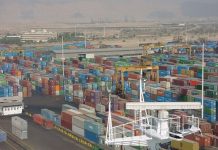Recovering from the contraction caused by the novel coronavirus disease (COVID-19) epidemic, China’s economy saw a better-than-expected performance in 2020. The GDP expanded 2.3 percent year on year to 101.59 trillion yuan ($15.6 trillion), exceeding the 100-trillion-yuan ($15.42 trillion) mark for the first time. The per-capita GDP exceeded $10,000 for two consecutive years, narrowing the gap with high-income countries, data from the National Bureau of Statistics (NBS) showed. Despite the 6.8-percent contraction in the first quarter last year, the GDP resumed positive year-on-year growth in the second quarter to 3.2 percent, finally reaching 6.5 percent in the fourth quarter. Throughout the whole year, notable progress was made in industrial restructuring, the use of clean energy and opening up the market, Ning Jizhe, head of the NBS, told a press conference on January 18.
According to Ning, the resumption of consumption, investment and foreign trade played a significant role in the rebound. The government introduced measures for curbing the epidemic, alleviating poverty, resuming industrial production and boosting trade growth, turning challenges into opportunities with a boom in new business models. However, the economy still faces uncertainties, including a global pandemic. So more efforts are needed to consolidate the recovery.
“Although COVID-19 cases reemerged in some regions in recent months, the impacts on the economy are still controllable. Backed by a complete industrial system, a great market demand, technological progress and a large talent pool, the economy will grow steadily this year,” Ning said.
V-shaped recovery
With epidemic containment and supporting policies, the sectors affected have picked up steam amid resumed market expectations. Over the past year, the government introduced measures including improving fiscal spending, tax relief and cuts in lending rates and the reserve requirement ratios of financial institutions to tide enterprises over difficulties. Data from the State Taxation Administration showed that the tax and administrative fee cuts exceeded 2.5 trillion yuan ($386.35 billion) last year. According to the NBS, the agricultural sector remained stable despite the epidemic and floods, with a 3-percent year-on-year growth of value-added output. Value-added industrial output, a key indicator of economic vitality, climbed 2.8 percent year on year as production and work gradually resumed since March 2020. The value-added output growth of the manufacturing industry reached 3.4 percent. The value-added industrial output of hi-tech manufacturing industries expanded as the demand for high-end products including smart watches and drones for civilian use grew.
The service sector, hit hard by the epidemic in the first months of 2020, saw its value-added output increase 2.1 percent compared with 2019 as people’s outdoor activities gradually resumed in the following months. “Domestic epidemic containment also drove the development of online business models including remote work, teleschooling, Internet-based healthcare and live-streaming, injecting impetus into the economy,” Ning said. Consumption remained a major driving force, contributing 54.3 percent to the GDP growth. While retail sales of consumer goods, worth 39.19 trillion yuan ($6.05 trillion), showed 3.9-percent decline year on year, the sector went up 4.6 percent in the fourth quarter of 2020, close to the pre-epidemic level. Auto sales particularly saw notable resumption. Boosted by greater indoor activities during epidemic containment, online retail sales of physical goods expanded 10.9 percent year on year to 11.76 trillion yuan ($1.8 trillion).
– The Daily Mail-Beijing
review News exchange item






